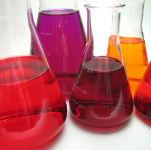 United States. Scientists at the Department of National Renewable Energy's (NREL) Laboratory have discovered that a metabolic pathway that was previously only suggested to be functional in photosynthetic organisms is actually an important pathway and may enable the efficient conversion of carbon dioxide into organic compounds.
United States. Scientists at the Department of National Renewable Energy's (NREL) Laboratory have discovered that a metabolic pathway that was previously only suggested to be functional in photosynthetic organisms is actually an important pathway and may enable the efficient conversion of carbon dioxide into organic compounds.
The discovery shines a new light on the complex metabolic web for carbon utilization in cyanobacteria, while opening the door to better ways to produce chemicals from carbon dioxide or plant biomass, rather than deriving them from petroleum.
The latest NREL discovery followed in the footsteps of recent work involving cyanobacteria, commonly known as blue-green algae. NREL scientists designed a cyanobacterium, Synechocystis, that is unable to store carbon in the form of glycogen in a strain that could metabolize xylose (a major sugar component of cellulosic biomass), thereby converting xylose and carbon dioxide into pyruvate and 2-oxoglutarate, organic chemicals that can be used to produce a variety of bio-based chemicals and biofuels. By testing this mutant strain under multiple growth conditions, scientists unexpectedly discovered that large amounts of acetic acid are excreted.
Acetic acid is a chemical produced in large volumes for a wide variety of purposes. The chemical industry produces more than 12 million tons of acetic acid annually, mainly from methanol, which in turn is mainly produced from natural gas. The potential to produce acetic acid from photosynthesis could reduce the country's dependence on natural gas.
The next step in detective work was to turn off the gene and see what happened. Deactivation in both wild and mutant strains of Synechocystis slowed the growth of sunlight, i.e. conditions depend only on the assimilation of CO2 through photosynthesis, demonstrating that the gene plays a role in photosynthetic carbon metabolism. Strains with the disabled gene do not excrete acetic acid into the light in the presence of xylose.

























Leave your comment